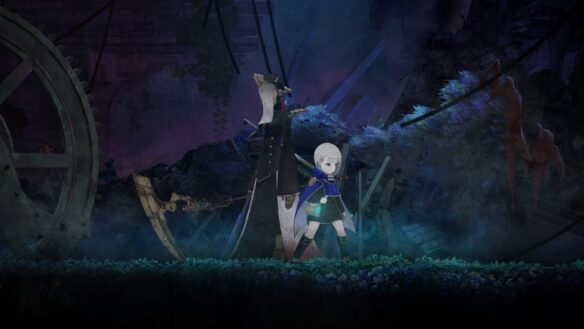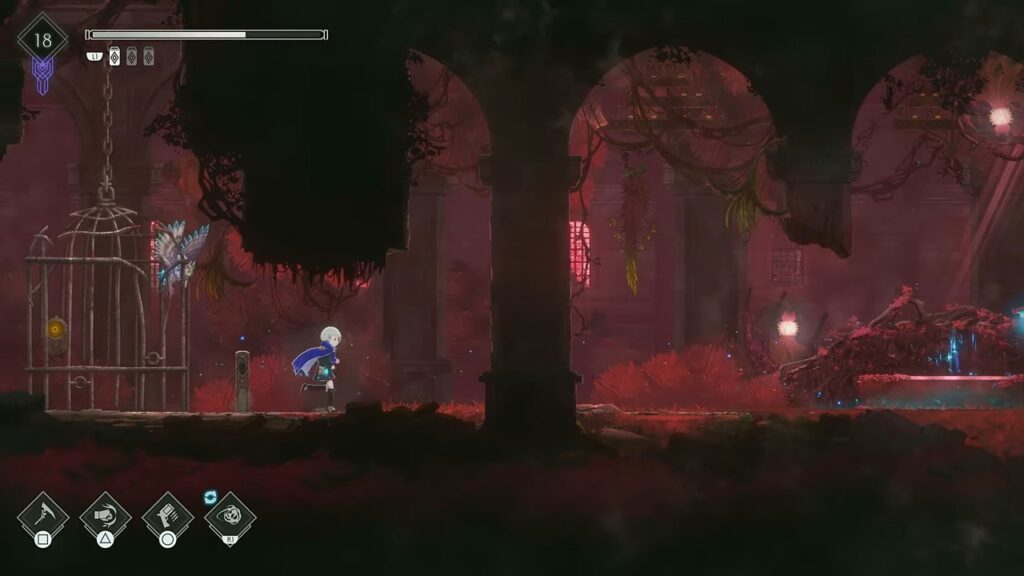Ender Magnolia: Bloom in the Mist Review – A Metroidvania Worth Losing Sleep Over

Platform(s): PS5 (version reviewed), Xbox Series X | S, PS4, Xbox One, PC
Genre: Dark Metroidvania
Here at Kakuchopurei, we occasionally miss out on covering certain games, and Ender Lilies: Quietus of the Knights was, regrettably, one of them. A real shame, considering how much praise it received. So, when the sequel Ender Magnolia: Bloom in the Mist landed on my doorstep, I was more than ready to see what all the fuss was about. There was just one problem—I’m not exactly the biggest fan of Metroidvanias.
Now, don’t get me wrong. I get why people love them. The non-linear exploration, the slow but satisfying power curve, the inevitable backtracking once you unlock that one ability that suddenly makes half the map accessible—it’s all very clever. But for me? I’ve always found the genre more of a test of patience than a test of skill.
And yet, after spending hours wandering through Ender Magnolia’s gorgeously ruined world, I have to admit… I get it now. This game might not convert every Metroidvania sceptic, but it certainly converted me.
A World Drenched in Gloom

Set years after Ender Lilies, this time, you step into the shoes of Lilac—a girl who wakes from a long slumber in a world that’s well past its prime. What’s left of civilisation consists of two factions: humans and the eerie, not-quite-human Homunculi. Some Homunculi look almost normal, others resemble twisted beasts, and all are vulnerable to corruption via a sinister mist known as “fumes.” Fortunately, Lilac happens to be an Attuner, someone who can purify the corrupted. Naturally, she embarks on a journey to piece together her lost memories and, ideally, fix what’s left of this rotting world.
Much like Hollow Knight, storytelling here is all about environmental clues and cryptic item descriptions. You won’t get a straight-up lore dump, but there’s just enough intrigue to keep you digging deeper. That said, the game occasionally leans a little too hard into its own gloom. Nearly every NPC is either bitter, depressed, or completely hopeless, making the melancholic atmosphere very effective—but also a bit heavy-handed. Still, the narrative does its job well: it gives you a reason to push forward without overstaying its welcome.
Familiar Formula, Exceptional Execution

If you’ve played a Metroidvania before, you’ll know the drill—nonlinear exploration, hidden upgrades, and backtracking galore. Ender Magnolia doesn’t reinvent the wheel, but it keeps it well-oiled. Combat is where things get interesting, borrowing from Soulslike design in how it encourages patience and precision. Button-mashing is a one-way ticket back to the last checkpoint, as even regular enemies hit hard and will punish careless play.
Mobility is a major highlight. Right from the get-go, you’re given options in traversal, ensuring that you never feel completely stuck in one area. As you progress, movement abilities like double jumps and air dashes open up new paths and add extra depth to combat. This keeps exploration fresh and rewarding—there’s always a reason to check every corner, whether it’s a health upgrade or a relic that enhances your abilities.
Speaking of combat, every encounter feels deliberate. Enemies telegraph their attacks (helpfully flashing red beforehand), and your arsenal consists of melee combos, cooldown-based strikes, ranged support, and a floating drone that provides some extra firepower. It’s a tight and satisfying system—challenging without being unfair, provided you actually pay attention to enemy patterns.
A Build to Call Your Own

Character progression offers just enough flexibility without getting overwhelming. Levelling up boosts your stats, but real customisation comes from relics, which grant passive buffs, and weapon choices. Lilac’s main weapon can take different forms, ranging from a slow, heavy axe to a quick, aggressive scythe, with a middle-ground sword for those who want a balance. New forms unlock as you progress, and upgrades make them even deadlier. The system strikes a nice balance—plenty of variety, but without drowning you in complexity.
Backtracking is an unavoidable part of the genre, but Ender Magnolia makes it as painless as possible. Fast travel is generous, and the map clearly marks areas where you’ve already scooped up all the secrets, ensuring you’re never aimlessly wandering in frustration.
A Feast for the Eyes (and Ears)

Visually, Ender Magnolia blends hand-drawn art with a sombre, fairytale-esque aesthetic. While some environments lean a little too hard on the smog-covered ruins motif, others introduce enough visual variety to keep things fresh. Most importantly, the game runs at a flawless 60fps in both docked and handheld modes, ensuring smooth, precise gameplay.
The soundtrack doubles down on the game’s melancholic tone, with soft piano melodies and sorrowful strings reinforcing the overarching sense of loss. Some tracks dial up the intensity when needed, but don’t expect a lighthearted romp—this isn’t Guacamelee or Shantae.
A Must-Play for Metroidvania Fans

Ender Magnolia isn’t here to shake up the genre, but it doesn’t need to. It’s a masterclass in execution, delivering tight combat, rewarding exploration, and an atmosphere that sticks with you. If you’re still hungry for another Hollow Knight-esque experience, this is absolutely worth your time. Sure, it’s bleak—but it’s also brilliant.
Final Score: 90/100
Review copy provided by publisher.



Leave a Comment